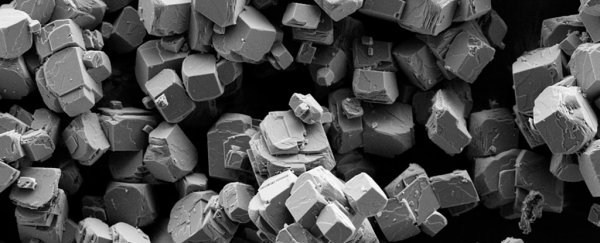A key tool in the fight against atmospheric carbon just got a big boost, with scientists finding a way to significantly speed up the process of locking away carbon in water or rocks – known as carbon sequestration.
Sequestration involves some complex chemical reactions, and the new research demonstrates a way of speeding up one specific part of those reactions, making it up to 500 times faster and removing a potential bottleneck in the overall process. This could be a huge boost in how quickly we can deal with our warming planet.
The inspiration behind the study from the California Institute of Technology (Caltech) and the University of Southern California (USC) was to learn more about how the oceans naturally absorb carbon dioxide already. In fact, there's currently about 50 times as much CO2 in the oceans as there is in the atmosphere.
"While the new paper is about a basic chemical mechanism, the implication is that we might better mimic the natural process that stores carbon dioxide in the ocean," says lead researcher Adam Subhas from Caltech.
Though CO2 naturally passes between air and water and vice versa, the combination of winds across the ocean surface and turbulence underwater help more of that carbon dioxide to get locked in the seas.
Eventually that carbon sinks to the bottom and gets neutralised by the 'dead' calcium carbonate sediment, but that will take thousands of years.
Meanwhile, as more CO2 is released into the atmosphere, it makes the ocean waters more acidic. It's one of the reasons why our coral reefs are suffering so badly - their calcium carbonate shells are being dissolved by the acid.
But we don't know how quickly coral dissolves when it gets hit with that acidity, because the chemistry is different in seawater than on dry land.
That's the chemical reaction the scientists focussed on in this research.
In the past researchers have used pH levels or acidity measurements to work out how quickly calcite was being dissolved, but the new study focussed on isotopic labelling instead, which allowed the researchers to track individual molecules with 200 times more sensitivity than other methods.
This technique showed that the slow part of the neutralisation is the conversion of carbon dioxide and water to carbonic acid.
"This reaction has been overlooked," says Subhas. "The slow step is making and breaking carbon-oxygen bonds. They don't like to break; they're stable forms."
That brings us all the way back to speeding up carbon sequestration. By adding the enzyme carbonic anhydrase, which helps balance pH levels in the blood of humans and other animals, the researchers got the process going much faster.
This doesn't mean we can suddenly start sucking excess CO2 out of the air, but it does tell us a lot more about how the ocean stores carbon naturally, and how we might be able to speed up that same process.
While reducing the amount of carbon dioxide we pump out into the atmosphere is the best way to keep the planet cool, a growing number of projects are springing up to try and capture this unwanted carbon as well.
Last year researchers from the Max Planck Institute for Terrestrial Microbiology in Germany investigated ways of improving the methods that plants use to naturally pull carbon out of the atmosphere, and we could potentially one day do the same with the oceans.
If we do manage to get there, we'll have these Caltech and USC scientists to thank.
"This is one of those rare moments in the arc of one's career where you just go, 'I just discovered something no one ever knew,'" says one of the team, Caltech's Jess Adkins.
The research has been published in PNAS.
